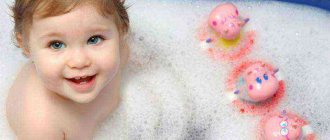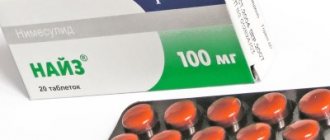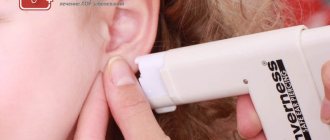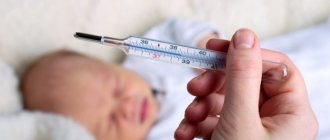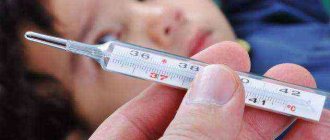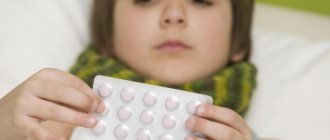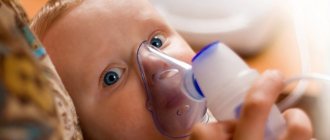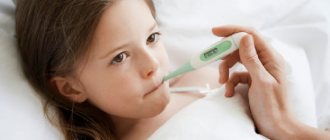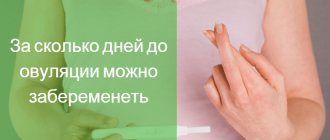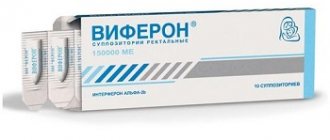Causes of fever in children
Hyperthermia occurs for various reasons. And it's not always a disease. Let's look at the main ones:
- Increased temperature in a newborn. In seven-day-old babies it ranges from 37 to 39 degrees. This is normal in most cases - there is nothing to be afraid of. Babies have immature brain structures, so thermoregulation has not yet been established;
- Overheat. Infants and children under 5 years old quickly overheat. Dress your baby warmly for the weather and expect a temperature spike. Babies quickly become hypothermic—as soon as you undress the child, the readings will drop within 20 minutes. Do not keep your child in the open sun for a long time;
- Teething. The reason is typical for children aged 18 - 24 months. The indicators do not exceed 37.6 degrees. In rare cases, they can significantly exceed the mark;
- Physical exercise. Increased activity, games, physical stress (for example, prolonged screaming);
- Constipation and drinking disorders. The child should drink enough fluid for his age;
- Low-grade hyperthermia. Has a long-lasting character. In infants up to 12 months it is associated with immaturity of the nervous system, in babies up to 24 months - with teething, in older children and schoolchildren - against a background of stress and emotional tension.
Pediatricians note: hyperthermia may be due to the constitutional characteristics of the child.
When should you not bathe your child if he has a fever?
Water procedures are not always prohibited. But in some cases, it can cause harm and aggravate the situation: provoke a temperature rise and worsen the baby’s well-being.
Bathing and showering are contraindicated for:
- the child's reluctance to bathe. Is he crying, screaming, being capricious? Do not force it. If you have a fever, headache or aching bones, a bath will not make you feel better;
- fever. Does the thermometer show 38 degrees or higher? Better leave the child in bed;
- nature of the disease. For infectious, viral, bacterial diseases, water procedures are contraindicated - it will get worse. Ailments include influenza, sore throat, otitis media, bronchitis;
- post-vaccination period. Have you been vaccinated and have a fever? Postpone ablutions for 2 days;
- bathe a newborn. A baby’s temperature is a reason to refuse water treatments. Show your child to the pediatrician.
Bathing a child with a fever is dangerous. The procedure can provoke “white fever” - an extremely serious condition. The temperature rises against the background of arterial spasm, and it is difficult to “bring it down” with antipyretic syrups. Does your baby have icy hands and feet, has his skin become “marbled”? Call a doctor at home - the condition can have serious consequences.
Features of bathing children with various colds
Colds have a variety of symptoms. This is due to the fact that they can be caused by different types of viruses. The more active the virus, the more pronounced the symptoms of the disease. In the mildest cases, complaints are limited to a slight sore throat and runny nose. With this type of cold, there is no need to be afraid of bathing your child; on the contrary, inhaling humidified air brings relief to a cold baby. Of course, the bathroom in which the baby is bathed must be warm and draft-free. After bathing, the child should be immediately dressed and put to bed.
Some types of colds are accompanied not only by a runny nose and cough, but also by fever. This condition is a temporary contraindication for swimming.
During this period, children experience temperature fluctuations - they feel hot and cold, so staying in the water will only increase the feeling of discomfort.
It is recommended to postpone water procedures until the body temperature drops to 37 degrees and the baby’s condition becomes stable. It is permissible to cool the body of a child with a fever using wet wipes of the extremities and lotions on the skin of the forehead. Due to temperature changes, the baby sweats profusely. A sweaty child should be immediately changed into dry clothes, and bathing should be postponed until the general condition and body temperature have stabilized.
Is it possible to bathe a child with a cough? Cough is not an obstacle to water procedures, but they must be carried out with caution, especially in children with asthmatic symptoms. Moist hot steam can provoke bronchospasm, which will worsen the baby’s well-being.
Children's ENT organs are designed in such a way that colds with a severe runny nose and copious snot can develop into otitis media. Is swimming dangerous if you have otitis media? Dr. Komarovsky recommends holding off bathing a little during the acute stage. Hot steam and water accidentally getting into the ear can cause increased pain in the inflamed ear and cause suffering to the baby. To maintain hygiene during otitis, it is advisable to limit yourself to quickly washing the body under a warm shower.
Is it possible to bathe a child with conjunctivitis? This disease is not a contraindication, but it must be taken into account that during acute inflammation with conjunctivitis, water and soap can become an additional irritant. In acute conjunctivitis, doctors do not recommend water procedures.
It is necessary to take into account not only the state of health, but also the emotional state of the baby. Usually children are willing to bathe, but a sick child may be capricious and refuse to bathe. You should not force the baby, this will only increase the discomfort of the little patient. It is better to wait until the child wants to bathe and accepts this process with pleasure.
When can you bathe a child with a fever?
Pediatricians list situations when water procedures are allowed. Here they are:
- Thermometer readings are below 38 degrees;
- The child has no signs of intoxication;
- The child is teething;
- Hyperthermia was noticed after physical activity;
- The baby has a runny nose and mild symptoms of an infectious disease;
- Bath a child with a runny nose without fever. A warm bath has a high level of humidity - it’s easier for the baby to breathe, the cough is less annoying, and the condition will improve.
Sometimes a bath is even indicated. For example, pediatricians recommend bathing a child with a fever due to chickenpox. At the height of the illness, the baby is plagued by itching. If he becomes infected in the summer, the disease causes even more discomfort: sweat gets on the rash and the skin itches more. Offer your child to take a warm bath every 3 hours - it will ease the condition.
It is also possible and necessary to bathe a child after a fever. Water will wash away sweat, open pores, improve well-being and mood. Hyperthermia may return within 10 minutes after the procedure - this is normal.
After vaccinations, the Mantoux test, taking a bath or shower is not prohibited. Do not overdo it with a washcloth, do not wet the injection site. Some pediatricians allow bathing a child with a temperature if it has risen after vaccination. Provided that the child feels well and asks to go to the bath. We recommend consulting with your pediatrician.
How to bathe a child with fever
Follow the rules for safe water procedures - this will help to avoid deterioration of the baby’s condition, progression of infection, and development of complications.
Water - 37 degrees. Does the child have a temperature of 38 - 39 degrees? Warm water 36 - 37 degrees will reduce the indicator. Hot will provoke hyperthermia - test it with your elbow, as for babies. The water should be comfortable and pleasant. In cold water, the child will “shrink” and freeze. Bathing a child at a warm temperature is useful - it will make him feel better.
Duration - up to 5 - 10 minutes. Does your child not want to sit in the water? Take it out - no violence. Feeling better and revived - let him sit longer.
Stay close. An unhealthy child is weak and may become dizzy, causing him to lose his balance and fall - do not leave the bathroom, be alert.
Look at the baby's condition. Is he cheerful and cheerful, does he ask for a swim? Are there any direct contraindications to the procedure? In this case, you can bathe the child at a fever. Is your daughter, son lethargic, sleepy, capricious, weak? Postpone the idea until your child feels better.
You cannot bathe a newborn - fever is a contraindication.
Consider the reason for the child’s unsatisfactory condition. Remember: symptoms of infectious diseases may worsen after heating the body in the bath.
Delicate bathing. If there is a rash, do not rub the skin, but rinse lightly with water without gel. You need to bathe your child at a temperature with detergent if he is sweating.
Wash your hair. This will not lead to negative consequences. Blot your hair dry, put on a robe with a hood, and protect your child from drafts.
After swimming, warm up. Immediately wrap the child in a towel, put on pajamas and socks, do not rush to leave the warm room - let it “cool down” a little in it. This is important during the off-season and winter.
The best time to bathe a child when he has a fever is in the evening. After the bath, put your baby to bed. The child will not freeze.
After physical activity - useful. After a warm bath, the indicators will return to normal. The same applies to psycho-emotional stress.
Conclusion
Children - especially babies - breathe through their skin. Water procedures are of great importance for their health, well-being, mood, and development.
You need to monitor your child’s hygiene every day. If you have hyperthermia, consult your pediatrician. If he allows it, feel free to wash your child; if not, wipe his face and neck with a damp cloth. Water washes away dirt and sweat, improving gas exchange and the baby’s well-being. With closed pores and sticky skin from sweat, it is difficult to recover quickly.
For safety, follow the rules of water procedures when your child is unwell.
For conditions that are atypical for a baby, especially a newborn, consult a pediatrician. He knows your child, will assess the seriousness of the situation, and give recommendations for care.
Bathing a child at high temperatures
An elevated body temperature indicates various changes occurring in the body. This is a defensive reaction that concentrates forces to fight the disease. Being one of the symptoms of a malfunction in the body or a serious illness, it warns of danger.
In this state one feels weakness, malaise, and loss of appetite. The child tolerates this a little easier and often leads a normal lifestyle. But what about daily hygiene? Is it possible to bathe children at fever?
It is generally accepted that the natural human body temperature is 36.6 C. In a child it is 0.3-0.5 C higher. You should know that the norm is individual for everyone. If it differs from the generally accepted one, and the person feels good, and, what is important, this indicator is constant, then this is the norm for him.
The mark on the thermometer of a child or an adult increases when the thermoregulation center, which is located in the brain, is irritated. The impact may be due to the presence of viruses and bacteria, hormonal imbalances, immune system disorders, metabolic disorders, allergies, stress and various tumors.
Disturbances can also occur in the very center of thermoregulation. In this case, it will be difficult for the body to adapt to changes in ambient temperature.
The norm includes fluctuations associated with the change of day and night. At night, the thermometer readings decrease.
For a child, everything is a little more complicated; the mark on the thermometer often fluctuates throughout the day. This is due to the peculiarity of the thermoregulation center. This is why you should not wrap your baby in warm weather. It is difficult for the body to quickly adapt to the environment, which in turn leads to overheating. A fever is not always a symptom of a serious illness. This condition can be caused by excessive activity of the child, stress, for example, after crying, taking medications or due to teething.
When the body has a high fever, breathing and heartbeat become more frequent, and sweating occurs. This leads to dehydration and promotes blood thickening. The amount of oxygen decreases, and, consequently, the nutrition of internal organs deteriorates. Therefore, drinking is a first aid measure. For colds and flu, the temperature cannot be reduced to 38.5 C, giving the immune system the opportunity to fight the infection on its own.
Taking water procedures during a fever is not a treatment for the disease, much less a mandatory measure. But, there are times when a child gets dirty and needs to be washed urgently. Many parents have a question: is it possible to bathe children at fever?
There are different opinions on this matter. Even doctors do not always give a clear answer as to whether a child can or cannot be bathed.
Some believe that bathing does not worsen the condition. On the contrary, it helps reduce fever.
There are even examples where high fever was brought down by washing with cold water. It can be noted that this is a rather extreme method that cannot be experimented with. Representatives of this group refer to the fact that during bathing, intensive cleansing of the body surface from waste products of bacteria and viruses occurs, thereby helping to alleviate the condition. And adding decoctions of sage, chamomile or calendula leaves promotes a speedy recovery.
With all this, it is noted that bath procedures should be carried out with caution. This means the absence of drafts, and simply open windows. It is important that the room is warm. The water temperature should be warm. After bathing, be sure to dry the child thoroughly with a towel.
This approach requires quite serious preparation. You need to be sure that bathing will bring more benefits than the possibility of worsening the patient's condition.
The other side explains why you can’t bathe a child with a fever by saying that such procedures are an additional burden for a weakened body. They do nothing to improve the condition. This can provoke quite dire consequences. This opinion is not unfounded. Cases of complications in a sick person after a session in the bathhouse are very frequent.
Here, of course, we are not talking about a sauna, but a bath can also cause serious hypothermia. In addition, during water procedures, blood flow to the skin increases, helping not only to increase heat transfer, but also to reduce the supply of oxygen to the organs, and, consequently, useful substances to the affected area.
If the child really needs to be bathed, then you can use a more gentle method in the form of wiping with a diaper or towel soaked in warm water. Thus, the risk of negative effects from taking a bath is significantly reduced. This method can be used both at 37 C and at 38 C.
Of course, in order to make the right decision, you need to carefully analyze the situation from all sides. After all, we are talking about a child, the responsibility for whose health lies entirely with his parents.
And only they know about the individual characteristics of their baby. And, of course, it is necessary to take into account factors such as the reasons for the appearance of elevated temperature.
Only a doctor can do this after conducting the necessary laboratory tests. Much depends on what the thermometer showed and the general condition. And if the child has no desire to splash around in the bathtub, then it is better to postpone hygiene procedures.
If done incorrectly, swimming can turn into a real ordeal. And the consequences will not take long to arrive.
By overcooling a weakened body, you can cause complications, for example, in the form of an even higher temperature, runny nose or cough. In any case, you should consult your doctor, and after that you can make a decision.
The materials posted on this page are informational in nature and intended for educational purposes. Site visitors should not use them as medical advice. Determining the diagnosis and choosing a treatment method remains the exclusive prerogative of your attending physician.
